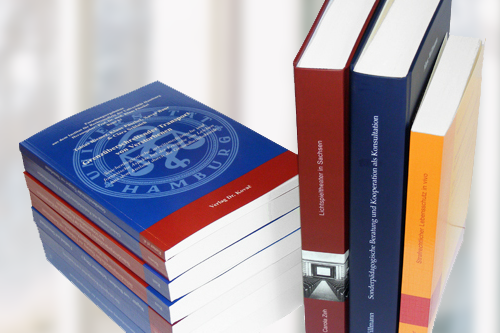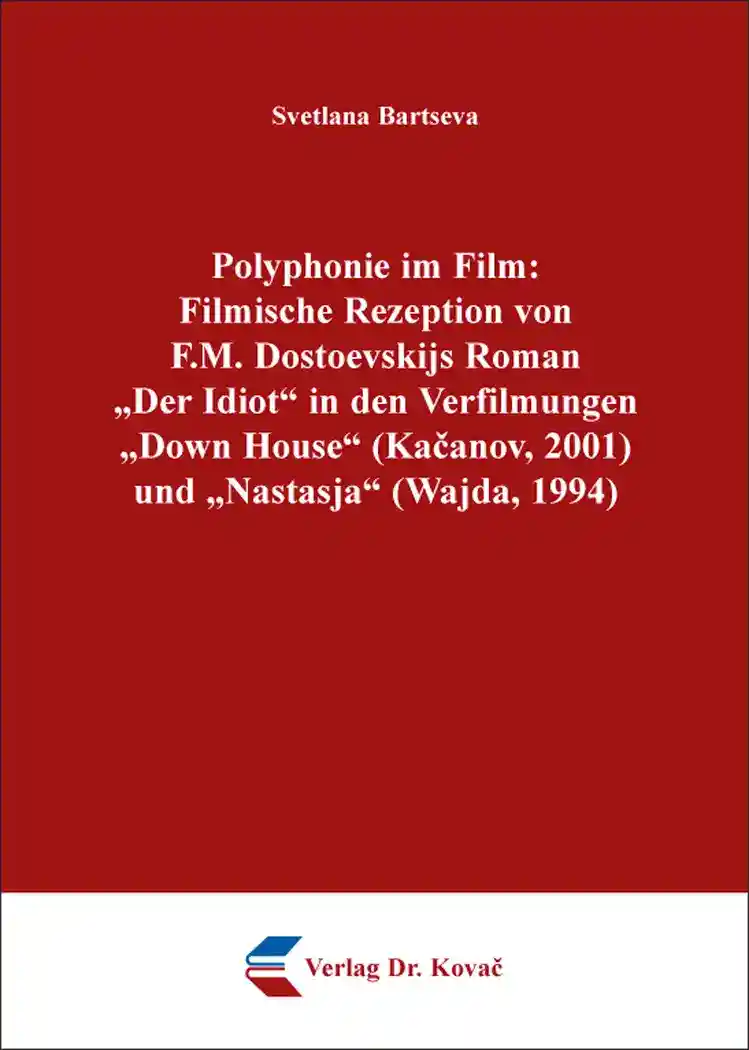Svetlana BartsevaPolyphonie im Film: Filmische Rezeption von F.M. Dostoevskijs Roman „Der Idiot“ in den Verfilmungen „Down House“ (Kacanov, 2001) und „Nastasja“ (Wajda, 1994)
Studien zur Slavistik, volume 34
Hamburg 2015, 246 pages
ISBN 978-3-8300-8598-0 (print) |ISBN 978-3-339-08598-6 (eBook)
About this book deutschenglish
The study deals with the difficulty of filming Dostoevskijs poetics, a process defined as polyphony in studies by Bachtin. The essay examines which instruments are needed to successfully transfer the polyphonic structure of a literary text into a visual medium without losing the characteristics of said structure. Based on Bachtin and Ėjzenštejn studies, which analysed polyphony in their respective genres, literature and film, a definition of polyphony in film is found taking the similarities of these two studies in consideration. With the help of detailed categories the two film versions of Dostoevskijs novel „The Idiot” (1869), „Down House“ (Kačanov, Ochlobystin, 2001) and „Nastasja“ (Wajda, 1994), will be examined. Neither of the films can be seen as a classic translation of the novel but instead develop an own concept in which the original work of Dostoevskij is strongly modified. Both films portray an experimental character and offer for interesting research due to their peculiar artistic structure while each working with different filming techniques. In this sense the film version „Down House” (2001) by Kačanov can be seen as a parody of the novel „The Idiot“ due to its provocations, defying of conventions and disregard of boundaries as commonly found in postmodern aesthetics. By placing „Down House“ in the context of the postmodern aesthetics the film achieves an unexpected close tie to the original poetic of the novel. Within the wide spectrum of postmodern techniques, Kačanov primarily concentrates on the aspect of carnivalisation, which takes over the role of a connecting piece between the novel and the film – Dostoevskijs polyphony and Kačanov‘s postmodern structure. After years of searching, Wajda finally found and filmed a worthy full visual adaption of Dostoevskij’s novel in 1994 titled „Nastasja“. By concentrating on the inner emotions of Dostoevskij’s characters he manages to reconstruct the novels inner voice in a visual manner. Inner dialogue as a literary method to portray the inner ambivalence is a main aspect of the films structure.Keywords
BachtinDer IdiotDostojewskiDown HouseEisensteinFilmwissenschaftInnerer DialogIntermedialitätKabukiKarnevaKinofilmNastasjaPolyphoniePostmoderneSergeiWajdaIhr Werk im Verlag Dr. Kovač

Möchten Sie Ihre wissenschaftliche Arbeit publizieren? Erfahren Sie mehr über unsere günstigen Konditionen und unseren Service für Autorinnen und Autoren.
